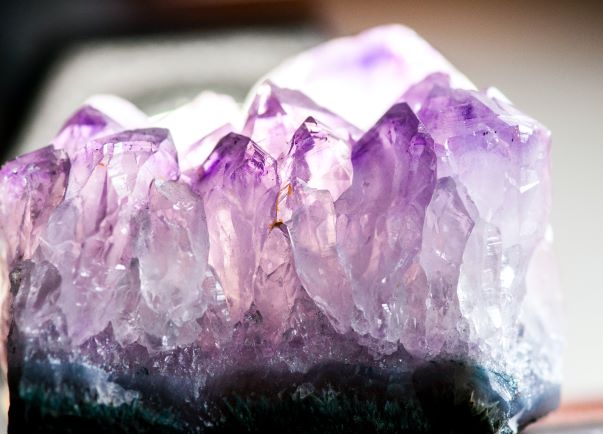Know Your... Gemstone Inclusions

Have you ever looked at a gemstone or crystal and noticed that it's not perfectly clear? I often get comments that a gemstone is ‘flawed’ or in other words, imperfect, but in the trade, that's not how these unique elements are viewed. Instead, they're termed ‘inclusions’ and can often raise the price of the gem considerably.
One notable example of this is Amber. If you find natural Amber with a long extinct fly inside it then the price can skyrocket. It can also determine whether it’s a natural piece or one of the many fakes that are on the market today. Amber is particularly easy to fake as natural pine tree resin can be compressed under great pressure to create a hard-to-identify fake. One particularly famous fake was discovered in the Metropolitan Museum in New York (AKA The Met), when a student of biology noticed a piece with an insect trapped inside that was not extinct, proving it couldn’t be from 40 million years ago!

Another mineral with inclusions that increase the price is the humble quartz. If you have rutile inclusions, then the price will be much higher than a clear specimen. Inclusions of petroleum give us the beautiful double terminated Herkimer quartz. It's considered by many to be more valuable with these inclusions which were naturally trapped millions of years ago.
Inclusions can also be useful in helping to identify natural gems from fakes. Larger inclusions can be identified using a loupe, but you might have to use a powerful microscope to be precisely accurate. Fake gems can often contain bubbles which indicates flaws when the gem was being ‘cooked up’ in a laboratory but a terminated crystal which can form naturally can look very similar to a bubble.
Then there are inclusions that create special effects, which wouldn’t necessarily lower the price. A gem with ‘chatoyancy’ is termed cats’ eye and can also be highly valuable. This is caused by light being reflected from fine parallel inclusions in a stone that has been cut with a smooth, rounded dome (a cut known as 'en cabochon'). Amazingly, these lines of inclusions can sometimes be intersect causing a star effect, known as asterism. The most famous examples being in found in sapphires and rubies.

When transition metals such as iron, manganese, chromium, and copper are present in a base material like corundum, a distinct gemstone is created which is familiar to us all. Corundum is the base mineral that forms sapphires and rubies - a ruby is basically a red sapphire.
Diamonds are also found in many different colours. The presence of iron causes yellow diamonds while boron turns the diamond blue. Just to confuse things though, pink diamonds - amongst the most expensive gems in the world - are caused by a distortion in the crystal structure, not by inclusions.
It's true that there are many gemstones which would lose some value if they had inclusions. But, as with our own imperfections, they can still make the stone incredibly interesting, unique and desirable.
Photo by Natalia Soto on Unsplash





